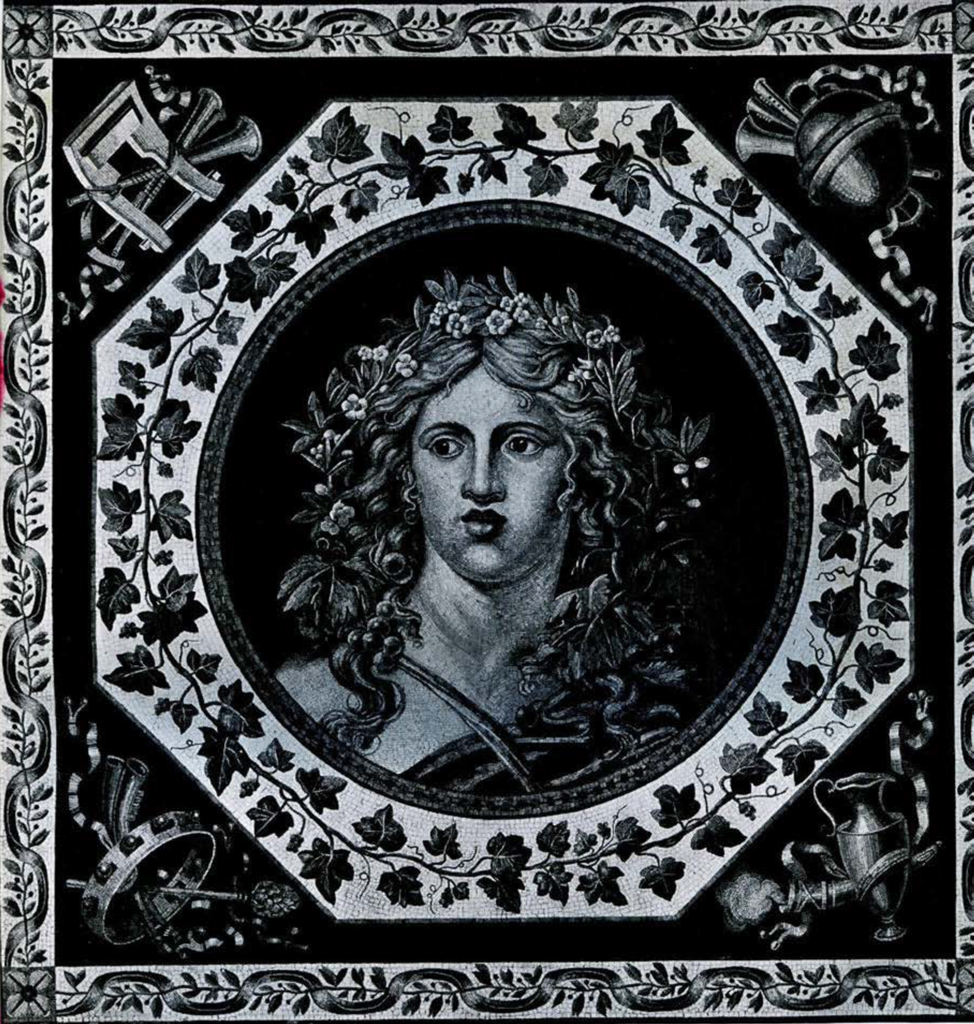INTEREST in ancient mosaics has been stimulated of late both by Pernice’s publication of mosaics from Pompeii, and by the discovery of scores of mosaics at Antioch. The Museum is fortunate to have acquired at this time by the generous gift of Mr. Henry G. Brock and the late Alice Gibson Brock the central panel of a mosaic floor discovered at Cento Celle, about forty miles east of Rome on the Via Praenestina, during excavations conducted by Guidi in 1880.
It was purchased shortly after it was found by Mr. and Miss Brock’s grandfather, and with it were secured two notes, one stating the circumstances of its discovery and the subject of the picture, written by Baron Pietro Ercole Visconti, once Commissioner of Antiquities at Rome, the other attesting its genuineness “except for a few restorations” written by no less an authority than Lanciani.

Museum Object Number: 38-5-1
Image Number: 3349
In the central tondo is Bacchus, his yellow hair bound with a wreath of white flowers, and purple grapes. Outside the tondo is an octagonal frame of white decorated with a branch of ivy. In the corners are Bacchic emblems: at the upper left a lyre and two trumpets, in the opposite corner, trumpets and cymbals; in the lower left a tympanum, a curved double tibia and the thyrsos, and in the lower right a wine jug and a lighted torch. The tesserae are of small size, some in fact only a millimeter in diameter. The colors are varied: red for Bacchus’ robe, for the wine jug, some of the berries and most of the ribbons which tie the Bacchic emblems; blue for the background of the narrow edge of the tondo, for the strap which crosses the Bacchus’ shoulder and for the cymbals; at least six shades of green are used for the leaves, and a wide variety of flesh tints combined with complete mastery of chiaroscuro.
Just where the “slight restorations” were made in this mosaic is now difficult to say. The shapes of the musical implements do not look entirely right, nor the rigidity of the outer garland, but an exhaustive search of unrestored mosaics-many of them unpublished-would be necessary before any of these motives could be finally condemned. The head of Bacchus rings true and gives an excellent idea of a type used not only in mosaic but also in painting in the first half of the third century A. D.
E. H. D.

